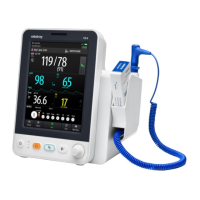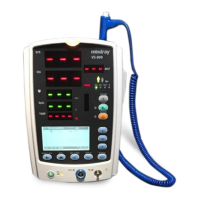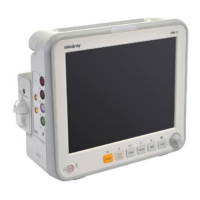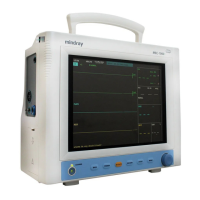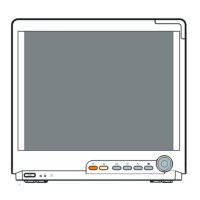7-5
The Sat-Seconds feature is available with the Nellcor SpO
2
module to decrease the
likelihood of false alarms caused by motion artifacts. To set the Sat-Seconds limit, select
[Sat-Seconds] in the [SpO
2
Setup] menu and then select the appropriate setting.
With Sat-Seconds alarm management, high and low alarm limits are set in the same way
as traditional alarm management. A Sat-Seconds limit is also set. The Sat-Seconds limit
controls the amount of time that SpO
2
saturation may be outside the set limits before an
alarm sounds. The method of calculation is as follows: the number of percentage points
that the SpO
2
saturation falls outside the alarm limit is multiplied by the number of
seconds that it remains outside the limit. This can be stated as the equation:
Sat-Seconds= Points × Seconds
Only when the Sat-Seconds limit is reached, the monitor gives a Sat-Seconds alarm. For
example, the figure below demonstrates the alarm response time with a Sat-Seconds limit
set at 50 and a low SpO
2
limit set at 90%. In this example, the patient % SpO
2
drops to 88%
(2 points) and remains there for 2 seconds. Then it drops to 86% (4 points) for 3 seconds,
and then to 84% (6 points) for 6 seconds. The resulting Sat-Seconds are:
% SpO
2
Seconds Sat-Seconds
2× 2= 4
4× 3= 12
6×
6=
36
otal Sat-Seconds= 52
After approximately 10.9 seconds, a Sat-Second alarm would sound, because the limit of
50 Sat-Seconds would have been exceeded.
SpO
2
%
Seconds
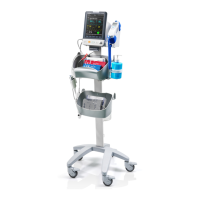
